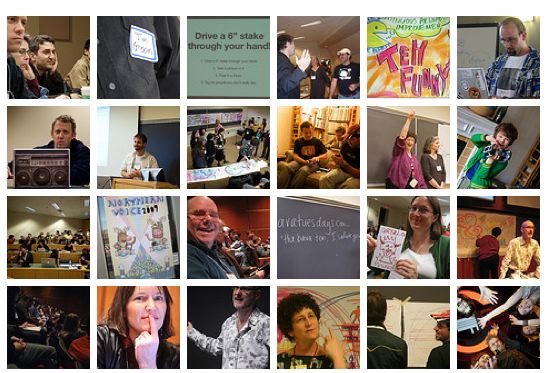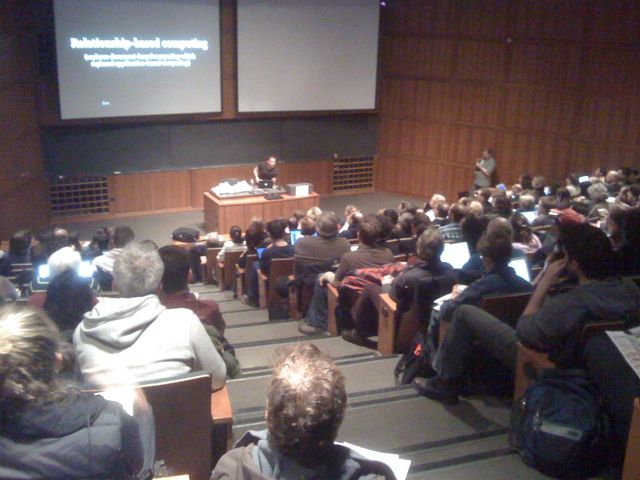So in the course of a talk hosted today by UBC’s Center for Cross-Functional Inquiry in Education, Dr. Suzanne de Castell made a brief aside referencing an article (it might have been this one or this one) called something like “Can Rock Band save rock?” Dr. de Castell summarized it by noting that this new generation of games was turning kids on to classic rock (and if I understood her correctly, made a fairly nuanced point concerning how games can support learning).
For some reason, this observation disturbed me. I’m honestly not sure why, so thought I might explore a few possible rationales for my reaction here. I should note that I have never played Rock Band or Guitar Hero, have never even been in the room with people who were playing those games. But if people can call for the censorship of films they’ve never seen or books they’ve never read, surely I can waste some speculative energy on my own blog?
Scenario one, loss of craft. Maybe I worry that these kids today will be so entranced by the push-button ease of these interfaces that they won’t want to do “the real thing.” On a related note, maybe on some level I wish I had not spent time and money in recent years to become a horrendous guitarist – maybe I would have had more fun gaming. But I don’t think this objection is what’s bugging me. For one, I can believe that at least some kids will be motivated by these games to try the real deal. Certainly my teen nephews (both of whom are very, very skilled musicians) love playing these games. And I’m not such a purist that I can’t at least imagine scenarios where these interfaces and programs don’t advance to the point where real music can be made with them. Who knows, maybe they will be forerunners for the next great genre of rump-shaking, nervous system stimulating grooviness. But that leads me to my second potential objection…
Scenario two, the play-by-numbers thing: if I understand the logic of these games correctly, maybe I don’t like how players work off of an existing song, and are scored by how well they “fit” the program, as opposed to doing something new. But really, most musicians develop by playing the music of others, I don’t get so worked up by the notion of learning by imitation, especially if it’s fun. But this problem does suggest my final worry…
Scenario three, “saving rock”: maybe the game playing is incidental. Maybe what I really don’t like is that the music industry has just found a vital and potent new medium to push its product. What I’ve seen of the musical offerings presented by these games, they seem like slightly hipper versions of commercial rock radio, albiet with more metal and other genres that major labels have never had a problem pushing.
I think what I find most depressing is that a new generation of kids are going to have the rock canon shoved down their throats. That they will implicitly be told (as my generation was) that the music of previous generations is superior to what they and their own peers are doing. Maybe what I object to isn’t “Rock Band” itself, but that it really might “save Rock”. I’m not putting down that music (come to our house, and you’ll hear most of the major old school rock icons), but the idea of “classic rock” needs to die. The music is strong enough to survive without a reactionary ideology and undue reverence.
Just at a moment when digital media promises to open up what music gets heard and how, it appears the money players might have found a way to reapply their chokehold. I should have seen it coming.














